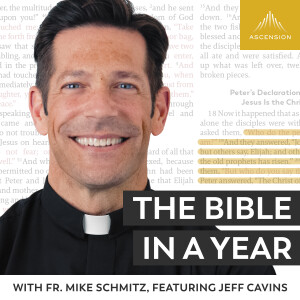

The Temple in the New Testament
Our Calling: To Be Image Bearers of God
In this insightful Bible teaching from Founded in Truth Fellowship, Matthew Vander Els explores the profound connection between the Old Testament temple and the New Testament understanding of a believer's purpose and the nature of sin. He begins by highlighting a shared thought about our vocation as believers, those in covenant with God and part of His kingdom. This vocation, according to the teaching, is clearly defined in scripture, particularly in Paul's writings in 1 Corinthians 5, where believers are called ministers of reconciliation and ambassadors of Christ.
Vander Els emphasizes that this job description isn't new; it was established in Genesis 1 when God created humanity in His image. The very essence of our being from the beginning was to be image bearers of the Most High God. He points out the fascinating Hebrew word for image used in Genesis, "tselim," which, when examined in a concordance, is also used to refer to idols. This connection sets the stage for a deeper understanding of our role in God's creation and the consequences of failing in that role.
Drawing a parallel with ancient pagan cultures, the teaching describes how their temples housed an image, or "naos," of their deity. Interestingly, while the Israelite temple, including the tabernacle, had outer courts for sacrifices and an inner holy place, it lacked a physical image of God. The speaker powerfully states, "Where's the image of our God? You're it." Humanity was created to be the living image of God, with the Spirit of God intended to dwell within us, making us ambassadors for that Spirit.
The True Nature of Sin: Turning from Our Vocation to IdolatryThe teaching then delves into the concept of sin. While acknowledging the common understanding of sin as the transgression of God's law, as stated in 1 John 3:4, it argues that this is a symptom of a deeper issue. The fundamental nature of sin is presented as a turning away from our vocation as image bearers and the pursuit of idols in various forms. Disobeying God's commandments creates chaos in His established order, His kingdom.
Every sin is rooted in idolatry, the act of handing over the authority God has given us as image bearers to something that is not God. This could be non-human entities, other humans, or even the "powers that be" that Christ broke the chains of. When we give our allegiance and service to these other things, we commit idolatry, leading to a form of slavery. Lust, addiction, and stealing are all presented as manifestations of this underlying idolatry, where we choose to abandon our vocation to pursue a transgression.
The speaker uses the analogy of having authority in a job to illustrate the authority given to humanity in the Garden of Eden – dominion over the earth and the task of expanding Eden as image bearers. Forsaking this vocation means surrendering that authority, leading to enslavement to whatever we choose to serve instead.
Paul and the Temple: Showing AllegianceThe teaching then examines a specific New Testament account in Acts 21, where Paul, facing accusations of teaching against the Law of Moses, is advised by James and the elders in Jerusalem to participate in a purification rite with four men under a vow and to pay their expenses. This act was intended to demonstrate that Paul was not teaching against circumcision or the commandments.
The nature of this vow is explained through Numbers 6, which describes the Nazarite vow, a separation unto the Lord involving abstaining from wine and grapes, not cutting hair, and requiring offerings upon completion or defilement. The temple had a specific Court of the Nazarites within the Court of Women, where the shaving of the head and the boiling of the peace offering took place to complete the vow. Paul's willingness to participate and fund these sacrifices, even years after Jesus' resurrection, highlights that the principles of God's Word were still valid, and he was not teaching against them.
The Trial of Yeshua: A Matter of LegalityMoving to the trial of Jesus in Matthew 26, the teaching analyzes the events through the lens of the Mishnah, a 2nd-3rd century compilation of rabbinic decrees based on earlier traditions. The speaker points out several discrepancies between the biblical account of Jesus' trial before Caiaphas and the Sanhedrin and the legal procedures outlined in the Mishnah's tractate Sanhedrin.
- The Mishnah states that the Sanhedrin could not meet on an evening, a feast day, or the eve of a feast day. Jesus' trial took place at night, before a major feast.
- For capital punishment cases, the Mishnah required a two-day process with overnight fasting and prayer by the Sanhedrin members before a judgment could be declared. This did not occur in Jesus' trial.
- National decisions and judgments requiring capital punishment were to be made by the entire Sanhedrin (70 or 71 members) gathered in the Chamber of Hewn Stone within the temple. Jesus' trial appears to have taken place at the high priest's house.
- The high priest did not hold a position of higher authority within the Sanhedrin during trials; the Nassi (prince or leader) presided. The biblical account emphasizes Caiaphas' role.
The teaching returns to the theme of idolatry, referencing Psalms 115, which describes idols as having mouths that do not speak, eyes that do not see, and ears that do not hear. The powerful conclusion drawn is that "those who make them will become like them" and "so do all who trust in them." This is connected to Jesus' healings, suggesting that the physical ailments He cured often mirrored the spiritual deadness and inability caused by idolatry – blindness, deafness, and a hardened heart.
Application for Everyday Life- Recognize your primary calling: Understand that your fundamental purpose as a believer is to be an image bearer of God in all aspects of your life.
- Identify and confront idols: Be aware of the subtle forms of idolatry in your life, such as the pursuit of sex, money, power, anger, or unforgiveness, and actively turn away from them.
- Understand the root of sin: See disobedience to God's commands not just as isolated acts but as symptoms of a deeper turning away from your vocation and allegiance to God.
- Embrace your role as an ambassador: Live as a representative of Christ, reflecting His love and character to the world in your actions and attitudes.
- Seek healing from the effects of idolatry: Recognize that spiritual healing from the deadness and brokenness caused by idolatry is available through Christ.
- Support fellow believers: Be present and willing to help others break free from their enslavements and walk in their vocation.
- Live a life of allegiance to God: Consciously choose to serve God rather than the idols of the world, understanding that you will become like what you serve.
For more Bible Teachings, click the link.
Note: This article contains affiliate links.
More Episodes
All Episodes>>You may also like
Create Your Podcast In Minutes
- Full-featured podcast site
- Unlimited storage and bandwidth
- Comprehensive podcast stats
- Distribute to Apple Podcasts, Spotify, and more
- Make money with your podcast













